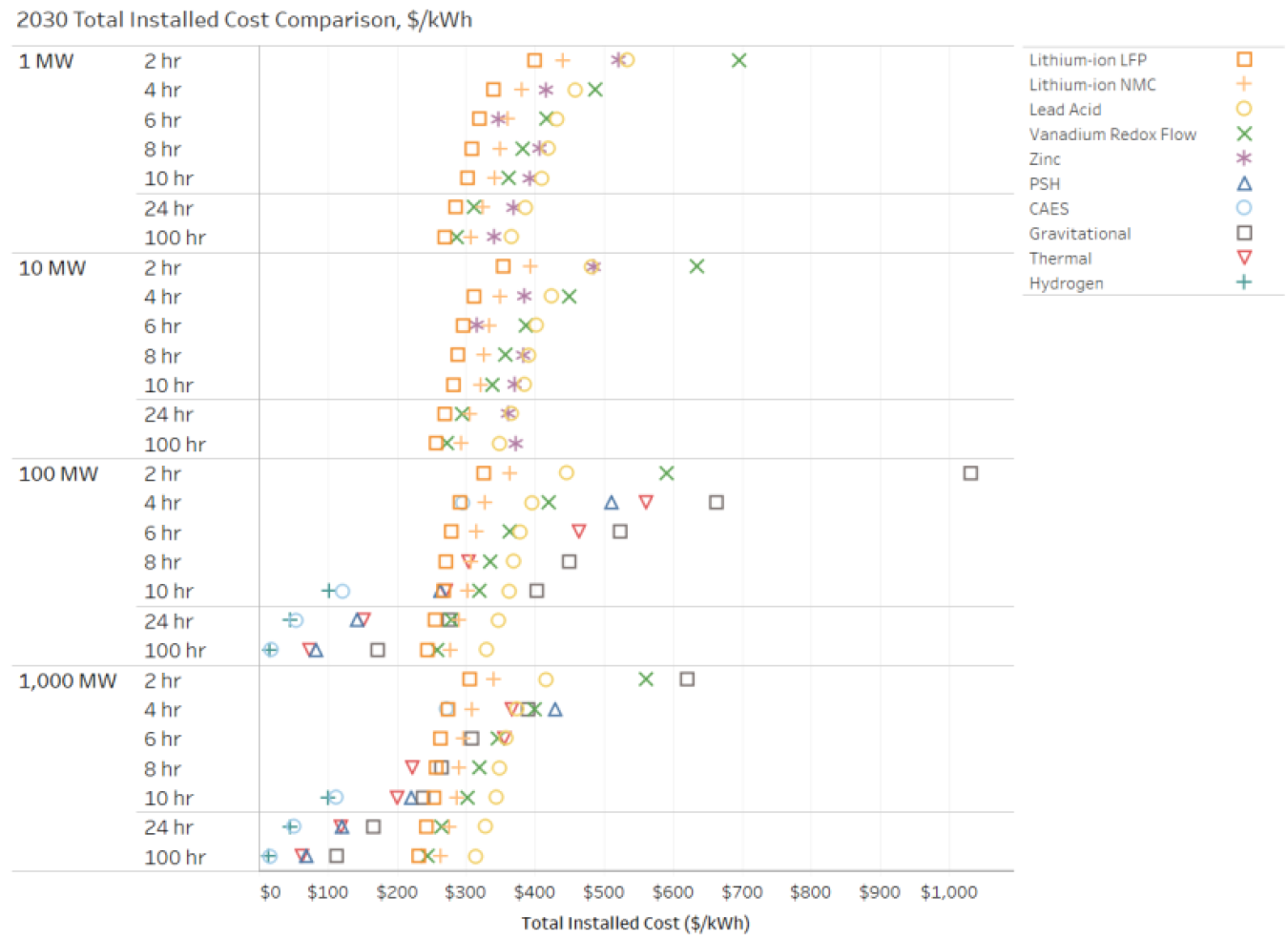The Department of Energy’s (DOE) Energy Storage Grand Challenge (ESGC) is a comprehensive program to accelerate the development, commercialization, and utilization of next-generation energy storage technologies and sustain American global leadership in energy storage. The program is organized around five crosscutting pillars (Technology Development, Manufacturing and Supply Chain, Technology Transitions, Policy and Valuation, and Workforce Development) that are critical to achieving the ESGC’s 2030 goals. Foundational to these efforts is the need to fully understand the current cost structure of energy storage technologies and identify the research and development opportunities that can impact further cost reductions. The second edition of the Cost and Performance Assessment continues ESGC’s efforts of providing a standardized approach to analyzing the cost elements of storage technologies, engaging industry to identify theses various cost elements, and projecting 2030 costs based on each technology’s current state of development. This data-driven assessment of the current status of energy storage technologies is essential to track progress toward the goals described in the ESGC and inform the decision-making of a broad range of stakeholders. As with last year, not all energy storage technologies are being addressed in the report due to the breadth of technologies available and their various states of development. Future efforts will continue to expand the list of energy storage technologies covered while providing any significant updates to cost and performance data for previous technologies. The 2022 Cost and Performance Assessment includes five additional features comprising of additional technologies & durations, changes to methodology such as battery replacement & inclusion of decommissioning costs, and updating key performance metrics such as cycle & calendar life.
- The 2020 Cost and Performance Assessment provided installed costs for six energy storage technologies: lithium-ion (Li-ion) batteries, lead-acid batteries, vanadium redox flow batteries, pumped storage hydro, compressed-air energy storage, and hydrogen energy storage. The assessment adds zinc batteries, thermal energy storage, and gravitational energy storage.
- The 2020 Cost and Performance Assessment provided the levelized cost of energy. The 2022 Cost and Performance Assessment provides the levelized cost of storage (LCOS). The two metrics determine the average price that a unit of energy output would need to be sold at to cover all project costs inclusive of taxes, financing, operations and maintenance, and others. However, shifting toward LCOS as a separate metric allows for the inclusion of storage-specific components and terminology that can be more accurately defined when compared to the levelized cost of energy calculation. This includes the cost to charge the storage system as well as augmentation and replacement of the storage block and power equipment. The LCOS offers a way to comprehensively compare the true cost of owning and operating various storage assets and creates better alignment with the new Energy Storage Earthshot (https://www.energy.gov/eere/long-duration-storage-shot).
- This report incorporates an increase in Li-ion iron phosphate and nickel manganese cobalt Li-ion cycle life and calendar life based on input from industry partners.
- Recycling and decommissioning are included as additional costs for Li-ion, redox flow, and lead-acid technologies.
- The 2020 Cost and Performance Assessment analyzed energy storage systems from 2 to 10 hours. The 2022 Cost and Performance Assessment analyzes storage system at additional 24- and 100-hour durations. In September 2021, DOE launched the Long-Duration Storage Shot which aims to reduce costs by 90% in storage systems that deliver over 10 hours of duration within one decade. The analysis of longer duration storage systems supports this effort.


